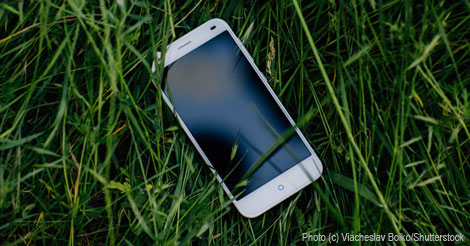|

Ask Natural Life:
Why Do We Need to Recycle Old Cell Phones?
by Wendy Priesnitz
Q: My family of two adults and three teenagers recently moved to a new home. As we were cleaning out closets and packing boxes, we collected a total of nine cell phones that we are no longer using. I just threw them in the trash as they surfaced. But the other day, someone in my office told me that was a terrible thing to do and said we should have recycled them. I recall that, at the time, I briefly wondered about how to do that but, in the chaos of moving, it was just one more thing I didn’t have time for. Did I commit an “environmental sin”?
A: Yes, you should most definitely have taken the time to recycle those cell phones. The potential human health and environmental impacts of cell phone waste are grim.
Cell phones are considered hazardous waste because they contain lead, copper, mercury, cadmium, and arsenic. If they are thrown in the trash and sent to incinerators or landfills, environmental contamination can occur from combustion and leaching into soil and groundwater. Many of the materials found in cell phones are also on the U.S. Environmental Protection Agency’s (EPA) list of persistent bioaccumulative toxins (PBTs). Because PBTs accumulate in fatty tissue of humans and animals, the toxins are gradually concentrated, putting those at the top of the food chain at the greatest risk, especially children. According to the EPA, “PBTs are associated with a range of adverse human health effects, including damage to the nervous system, reproductive and developmental problems, cancer, and genetic impacts.” And, since it’s estimated that there is now one cell phone for every two persons on Earth, that’s a lot of danger!
Because cell phones have crossed the divide between rich and poor, as well as all national and ethnic barriers, their impact on the environment is global. In some countries, it is commonplace to see people talking on cell phones while riding their donkeys. Or you can witness a beggar taking a break from his work to talk on his cell phone. In fact, a majority of cell phone users are said to be in developing countries.
In developed countries, obsolescence is a large part of the cell phone waste problem. Manufacturers are coming up with new designs and features on a regular basis, so that many phones are replaced after only a year or two. In Canada, the Recycling Council of B.C. has estimated that forty thousand cell phones are discarded daily. And most of them go directly to landfills. In fact, the EPA says that less than two percent of the five hundred million used cell phones in the U.S. are recycled.
A 2007 study at the University of California, Irvine pegged the used cell number at closer to seven hundred million. In spite of being considered hazardous waste and therefore officially not allowed in landfills, as you have demonstrated, many find their way there anyway, or else sit in people’s drawers waiting to be disposed of. In California, the Department of Toxic Substances Control has designated e-waste as “universal waste” because it poses lower immediate risk to people and the environment when properly managed – that is, recycled. The designation also means that cell phones must be taken back by retailers who sell them.
Even if you’re not in California, recycling cell phones (not to mention headsets, chargers, batteries and other accessories) has become very easy in recent years. Many organizations, such as cell phone manufacturers, retailers, network carriers, charities, and solid waste programs, offer cell phone donation and recycling programs. There are a number of online, national recycling programs that make it quick and easy for people to find local drop-off locations for cell phones and related paraphernalia. And many municipalities now accept electronic waste for recycling.
Even if no locations exist within your vicinity, you can often mail your used phone free of charge. (Note that there are international agreements regulating the export and trade of hazardous waste, so you should find a program in your own country to choose the mail-in option.)
If you have upgraded your cell phone and the old one still works, some programs refurbish, reset, and donate them to charities for reuse, or sell them at a discount to those in need of a phone. Very old and broken phones are typically sent to a recycler to be dismantled with the goal of reusing as many parts as possible.
Working parts can be removed and used to assemble “new” phones, which then find their way to people like those donkey riders overseas.
The EPA’s Plug-In To eCycling program claims that recycling one million cell phones saves enough energy to power more than 185 households with electricity for a year.
Before you drop off or mail your cell phone for recycling, be sure that you have terminated your service contract and erased any data, such as your address book, or remove the SIM card. But do recycle it, rather than dropping in the trash.
Better still, think about whether or not you even need to upgrade to the latest gadgets or if you can make do for a while longer with the phone you have.
Wendy Priesnitz is Natural Life's editor and a journalist with over 40 years of experience.
|

